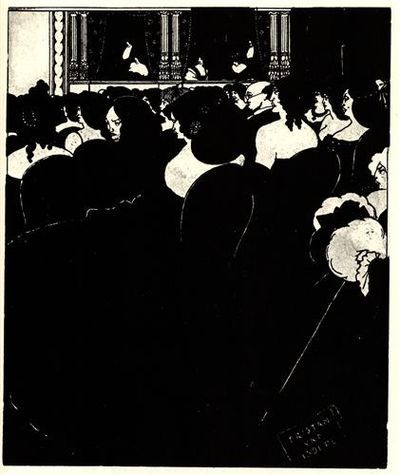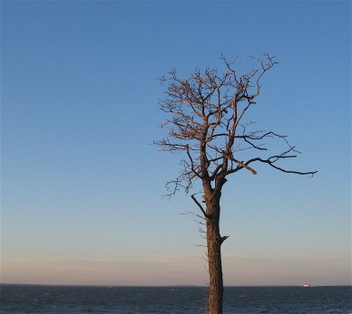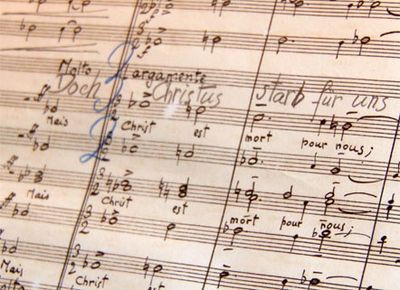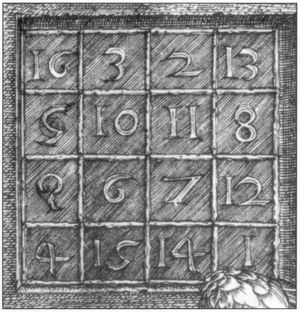Alex Ross's Blog, page 102
March 21, 2016
A Verunelli moment
Francesca Verunelli will be the subject of a Miller Theatre Composer Portrait on April 21. ICE presides.
March 18, 2016
LHL's farewell
The tenth anniversary of Lorraine Hunt Lieberson's death arrives in July. The supreme mezzo-soprano, whom I described in a memorial article as the "most remarkable singer I ever heard" (nothing has changed in the interim), made her final public appearance ten years ago today, in a Chicago Symphony performance of Mahler's Second Symphony. Marc Geelhoed, the manager of audio media at the Chicago Symphony (and the former classical critic of Time Out Chicago), has arranged to stream the "Urlicht" movement from those performances. Frank Villella, the CSO's archivist and a member of the CSO Chorus, remembers her beautifully in a commentary on the CSO site. In the recording, she gives the impression that she intends to go on singing forever, as indeed she will.
March 14, 2016
For Peter Maxwell Davies
The celebrated British composer has died at the age of eighty-one.
March 12, 2016
Geriatric quartet rejuvenated
As a rule, non-specialist articles on classical music feel compelled to mention at the earliest opportunity that the art form is clutched in the bony hands of ghastly old people. A Times magazine profile of Caroline Shaw, obviously motivated by her recent collaboration with Kanye West, is no exception: "A few months ago, in Iowa City, I attended a recital by the avant-garde string quartet JACK ... The recital hall was crowded, with a sizable contingent of skinny-jean-clad locals. This incursion of youth into the securely aged domain of the classical-music audience was owed, it seemed, to the promised appearance of a guest performer, Caroline Shaw." Yes, the JACK Quartet usually attracts nursing-home residents on field trips, but on this occasion the group was blessed by a visit from a friend of Kanye, and young people materialized. At least, that's what the article seems to be suggesting. It's more likely that these "skinny-jean-clad locals" were composition students at the University of Iowa. Caroline Shaw, a gifted and individual artist, deserves better than to be introduced in this fashion.
Nonsense of the day
As a rule, non-specialist articles on classical music feel compelled to mention at the earliest opportunity that the art form is clutched in the bony hands of ghastly old people. A Times magazine profile of Caroline Shaw is no exception: "A few months ago, in Iowa City, I attended a recital by the avant-garde string quartet JACK ... The recital hall was crowded, with a sizable contingent of skinny-jean-clad locals. This incursion of youth into the securely aged domain of the classical-music audience was owed, it seemed, to the promised appearance of a guest performer, Caroline Shaw." Yes, the JACK Quartet usually attracts nursing-home residents on field trips.
March 10, 2016
Appearance

Tomorrow at Williams College, as part of the Williams Music Department's Class of 1960 lecture series, I will speak on the topic "Brünnhilde's Rock: Wagnerism, Gender, and Sexuality." The event is in Presser Hall at 415pm. The next day, Judd Greenstein's much-anticipated first opera, A Marvelous Order, will have what is described as its "pre-première."
March 9, 2016
For George Martin
The eminent British producer, best remembered for his work with the Beatles but also cherished for incomparable comedy albums by Beyond the Fringe, Flanders and Swann, Peter Sellers, and others, has died at the age of ninety.
March 7, 2016
Golgotha in New York
Frank Martin's austere choral masterwork will receive an exceedingly rare New York performance on Sunday at Trinity Wall Street, with the New Amsterdam Singers undertaking the task. The archives of the New York Times suggest that the last — indeed, only — local performance was in 1952, when the Dessoff Choirs presented it. Olin Downes, of the Times, described the work as "unfortunately invertebrate," a phrase that applies rather better to Downes's style than to Martin's. Tony Tommasini gave a much warmer reception to Harmonia Mundi's 2010 recording.
Previously: Busoni, Martin
March 6, 2016
For Nikolaus Harnoncourt
An Adrian Leverkühn Companion
Detail of Dürer's "Melancolia I."
Here, at the request of Michael Cooper of the New York Times, are various materials relating to the music of Adrian Leverkühn, as imagined in Thomas Mann’s novel Doktor Faustus. When I first became a Faustus obsessive thirty years ago, I jotted down a list of Leverkühn's works on a blank page of a beat-up paperback; I give an expanded version of that list there, alongside a partial selection of works that informed Mann’s descriptions and a list of real-life works that took inspiration from Mann’s fictional creation. S. Fischer Verlag’s critical edition of Doktor Faustus, edited by Ruprecht Wimmer and Stephan Stachorski, was of assistance.
Short biography: Adrian Leverkühn was born on June 6, 1885, in Kaisersaschern, Germany. He pursued theological studies in Halle and Leipzig, and from 1905 to 1910 he studied music privately with Wendell Kretzschmar in Leipzig. He lived in Munich from 1910 to 1913, then moved to Pfeiffering bei Waldshut, in Oberbayern, where he remained until his death. The manifest difficulty of his musical style hindered public acceptance, although he received support from such leading conductors as Bruno Walter, Otto Klemperer, and Ernest Ansermet. His creative career ended on or about May 16, 1930, when, twenty-four years to the day after an apparent pact with the Devil, he suffered a mental collapse. He died on August 25, 1940, and is buried in Oberweiler churchyard. The principal source of information about his life is an unsystematic biography by his longtime friend Serenus Zeitblom.
Worklist
R. 1 Six- to eight-part choruses
R. 2 Fugue for string quintet and piano
R. 3 Symphony
R. 4 Cello Sonata in A Minor
R. 5 Meerleuchten (Phosphorescence) (c. 1906)
Première: Geneva, 1910; second performance in Basel, Ernest Ansermet cond. Orchestre de la Suisse Romande
R. 6 Songs from Provençal, Catalan, Spanish, and Portuguese texts. Includes settings of Sá de Miranda and San Juan de la Cruz.
R. 7 Settings of Dante’s Divina Commedia
R. 8 Songs on poems of Paul Verlaine (1906-7). Includes La lune blanche, Chanson d’automne, Un grand sommeil noir, Sur l’herbe, Les indolents.
R. 9 Songs on poems of William Blake (1906-7). Includes The Sick Rose, A Poison Tree, Silent, Silent Night.
R. 10 Concerto for string orchestra
R. 11 Klavierstücke
R. 12 Quartet for flute, clarinet, basset horn, bassoon
R. 13 Brentano Lieder, thirteen settings for various voices and instruments
1. O lieb Mädel. 2. Abendständchen. 3. Hymne. 4. Die lustigen Musikanten, for soprano, alto, tenor, baritone, and boy soprano, string orchestra, woodwind, and percussion. 5. Der Jäger an den Hirten. 6. Eingang. 7. Der Feind. 8. Als ich in tiefen Leiden. 9. Frühlingsschrei eines Knechtes aus der Tiefe. 10. Großmutter Schlangenköchin. 11. Wiegenlied. 12. Aus den Nachklängen Beethovenscher Musik. 13. Sprich aus der Ferne.
Première: 1922, Zürich Tonhalle, Volkmar Andrae cond., Jacob Nägli as boy soprano.
R. 14 Love’s Labour’s Lost, opera after Shakespeare, libretto by Serenus Zeitblom (1913)
Première: 1914, Lübeck, Wendell Kretzschmar cond.
R. 15 Songs on poems of Blake and Keats (1913). Includes Ode to a Nightingale, Ode on Melancholy.
R. 16 Frühlingsfeyer (Spring Festival), for baritone, organ, and string orchestra, after Klopstock
R. 17 Die Wunder des Alls (Wonders of the Universe), symphony in one movement (1914)
Première: 1920, Weimar, Bruno Walter cond.
R. 18 Gesta Romanorum, work for marionette theatre (1914)
Première: 1921, Donaueschingen
R. 19 Apocalipsis cum figuris, oratorio after the Revelation of St. John, inspired by the woodcuts of Albrecht Dürer (1919)
Première: Feb. 1926, International Society of Contemporary Music, Frankfurt, Otto Klemperer cond.
R. 20 Violin Concerto (1923)
Première: Vienna, early 1924, Rudi Schwerdtfeger as soloist. Subsequent performances in Basel and Zürich, with Paul Sacher cond. the Swiss Chamber Orchestra.
R. 21 Ensemblemusik for three strings, three woodwind, piano (1927)
R. 22 String Quartet (1927)
R. 23 String Trio (1927)
R. 24 Ariel’s Songs from The Tempest, for soprano, violin, oboe, bass clarinet, celesta, and harp (1928)
1. Come unto these yellow sands. 2. Full fathom five thy father lies. 3. Where the bee sucks, there suck I.
R. 25 Dr. Fausti Weheklag (The Lamentation of Dr. Faustus), symphonic cantata after the Faust chapbook of 1587 (1929-30)
Models
Meerleuchten is described as resembling Debussy and Ravel—presumably, La Mer in particular. I imagine it sounding like Zemlinsky's Seejungfrau, Schreker's Chamber Symphony, or Schoenberg's Pelleas und Melisande, all of which show Debussy's influence. The young Leverkühn was also somewhat under the spell of Richard Strauss; in 1905, shortly before Meerleuchten was composed, he was present for the première of Salome in Dresden, and subsequently attended the work's Austrian première in 1906 — at least, claimed to do so, that trip having constituted a pretext to visit the syphilitic-Satanic prostitute Esmeralda.
The settings of Verlaine bring to mind Debussy and perhaps also Stravinsky. The Brentano Lieder suggest Mahler, although the description of Leverkühn’s “strict” method points toward Schoenberg. Gesta Romanorum, for marionette theatre, calls to mind Stravinsky’s Histoire du soldat and Petrushka.
The Apocalipsis makes one think variously of Schoenberg’s Moses und Aron (the Dance Around the Golden Calf), Honegger’s Jeanne d’Arc (the episode for shouting chorus), Stravinsky’s Oedipus Rex, and early experimental works of John Cage (the use of amplifiers and loudspeakers).
The Violin Concerto, with its late-Romantic overtones, recalls Berg’s Violin Concerto. Theodor W. Adorno, who was Mann’s musical adviser, was responsible for most of the description of this and other late Leverkühn works, and his relationship with Berg undoubtedly colored the text.
The later chamber music is inspired by Schoenberg. The Ensemblemusik resembles the instrumentation of Pierrot lunaire and the Serenade; the Quartet suggests Schoenberg’s Third and Fourth Quartets; the String Trio is modeled on Schoenberg’s work in the same form, which he discussed with Mann in October 1946, while the novel was in progress.
The Lamentation of Dr. Faustus, described as a revocation of Beethoven's Ninth Symphony, seems to draw variously on late Beethoven, Mahler, Schoenberg, and Berg. The progression from the sardonic “choral scherzo” of Faust’s descent into hell to a desolate Adagio lamentoso echoes the progression from Rondo Burlesque to Adagio in Mahler’s Ninth. The "lamentoso" marking points toward Tchaikovsky's Pathétique. The description of the ending follows Adorno’s account of Berg’s Lyric Suite. “One instrument after another falls silent. The viola alone remains, but it is not even allowed to expire, to die. It must play for ever; except that we can no longer hear it.”
Works influenced by Leverkühn
Hanns Eisler, libretto for unrealized Doktor Faustus opera (1951) [inspired by Mann’s employment of the sixteenth-century Faust text]
Humphrey Searle, The Devil’s Jig (1977) [contains realizations of Leverkühn works]
Henri Pousseur, Votre Faust (1960-68)
György Ligeti, Chromatic Fantasy (1956) [Ligeti first learned of the twelve-tone method of composition, eccentrically deployed in this piece, from reading Doctor Faustus. Ligeti’s Requiem may also exhibit Leverkühnian elements.]
György Kurtág, The Sayings of Péter Bornemisza (1963-68)
Rolf Wilhelm, music for Franz Seitz's film Doktor Faustus (1982)
Poul Ruders, Corpus cum figuris (1985)
Zoltán Jeney, Twelve Songs for female voice, violin and piano, to poems by e. e. cummings, Tandori Dezső, William Blake, Sándor Weöres, and Friedrich Hölderlin [the setting of Blake’s “In a mirtle shade” is marked “Adrian Leverkühn’s song"]
Peter Maxwell Davies, Resurrection (1987)
Bengt Hambraeus, Apocalipsis cum figuris secundum Dürer (1987)
Alfred Schnittke, Faust Cantata (1983) and opera Historia von D. Johann Fausten (1995) [Schnittke told me in 1994 that Doctor Faustus “had an incredible influence on me.”]
Hans Werner Henze, Violin Concerto No. 3 [Drei Porträts aus dem Roman Doktor Faustus von Thomas Mann: 1. Esmeralda, 2. Echo, 3. Rudi S.] (1996/2002)
Thomas Mann’s son Golo once wrote to Benjamin Britten: “My father, incidentally, used to say, that if it ever came to some musical illustration of his novel, Doctor Faustus, you would be the composer to do it.” Britten and Leverkühn both set Blake’s “The Sick Rose” and Verlaine’s “Chanson d’automne”; both had a taste for archaic folk poetry and medieval subjects; both composed a Shakespeare comedy. Doctor Faustus can be seen on the shelves of the library of the Red House in Aldeburgh, but Donald Mitchell told me that Britten never read it.
See also: Imaginary Concerts.
Alex Ross's Blog
- Alex Ross's profile
- 425 followers






